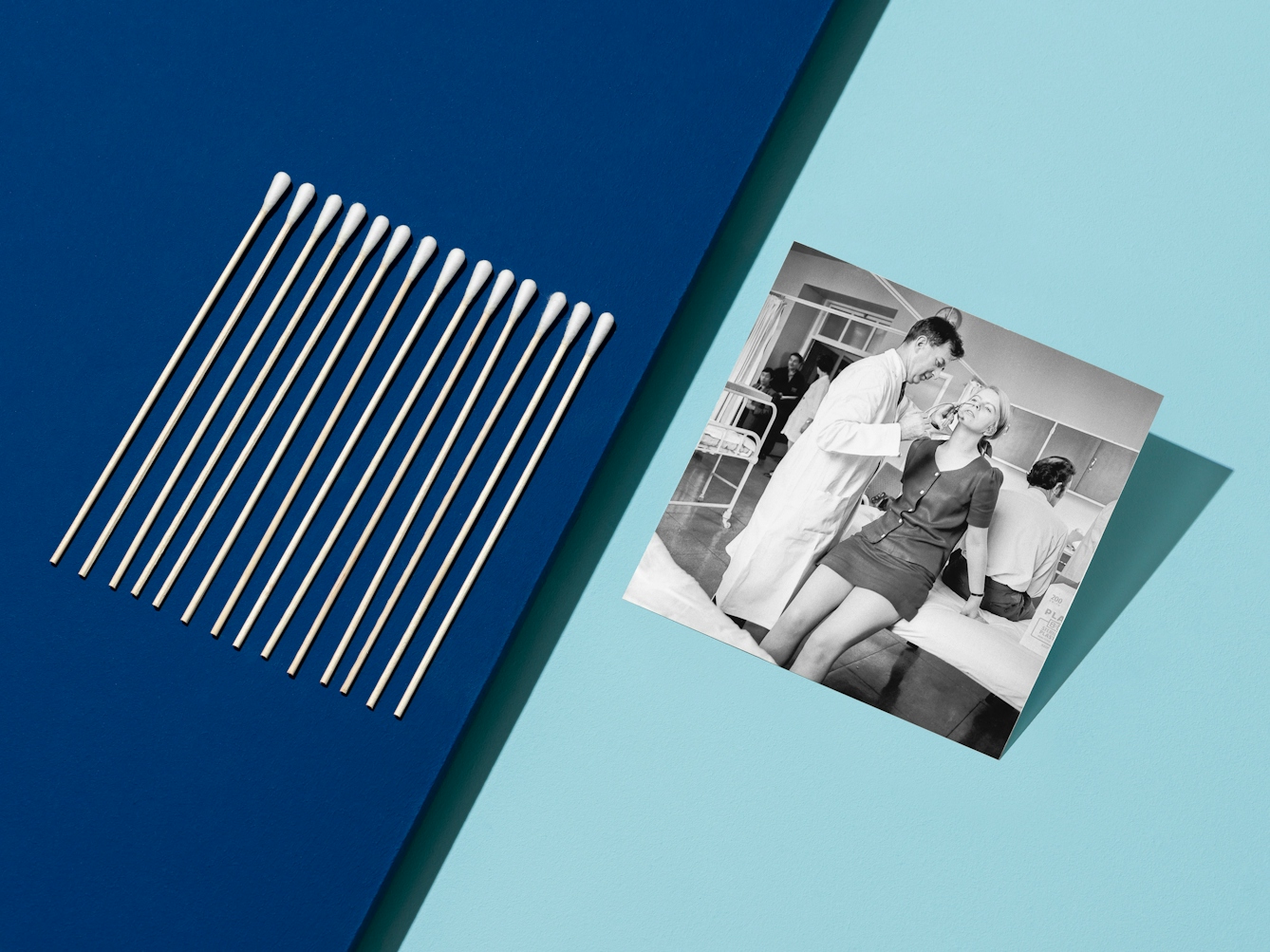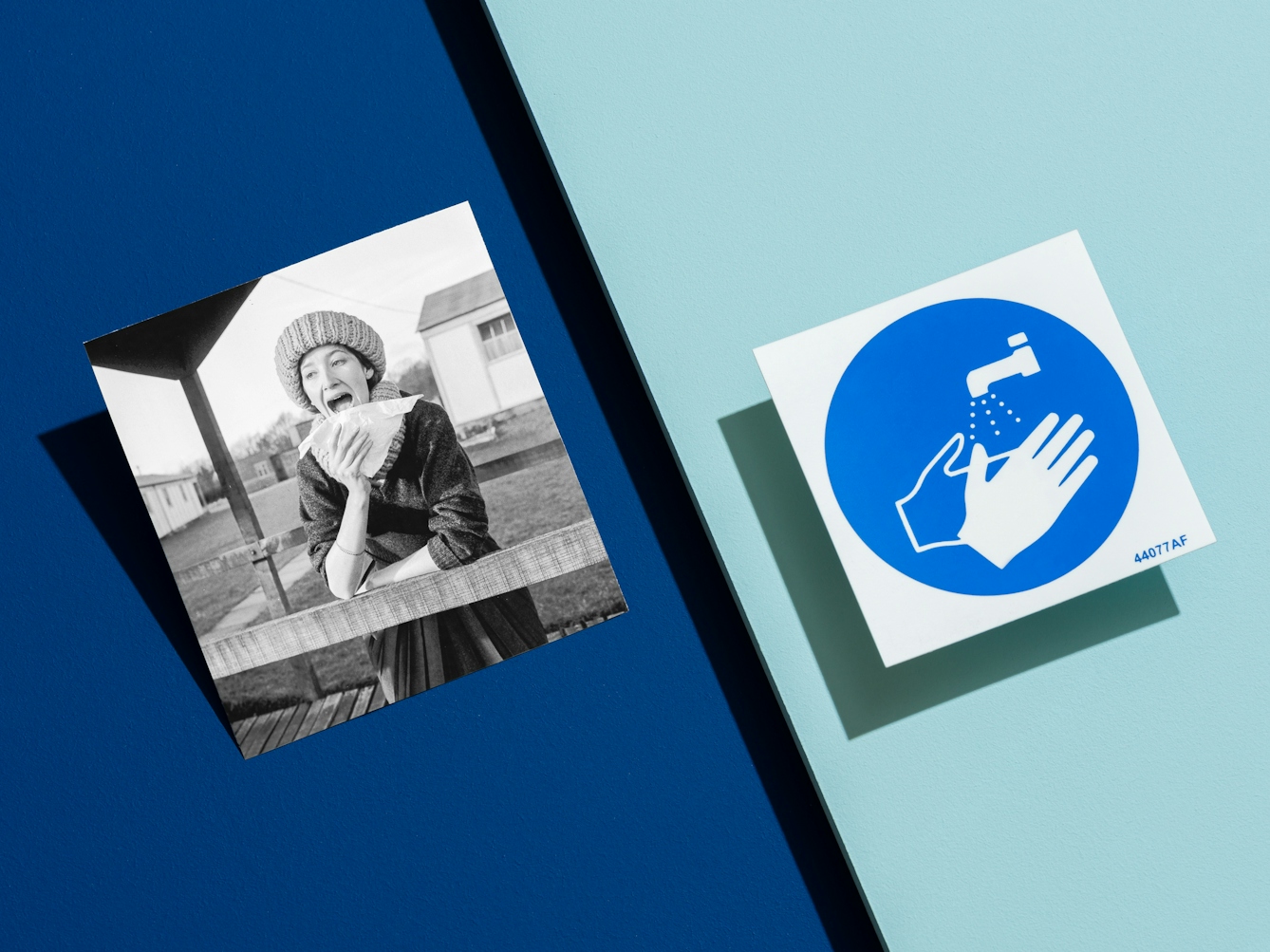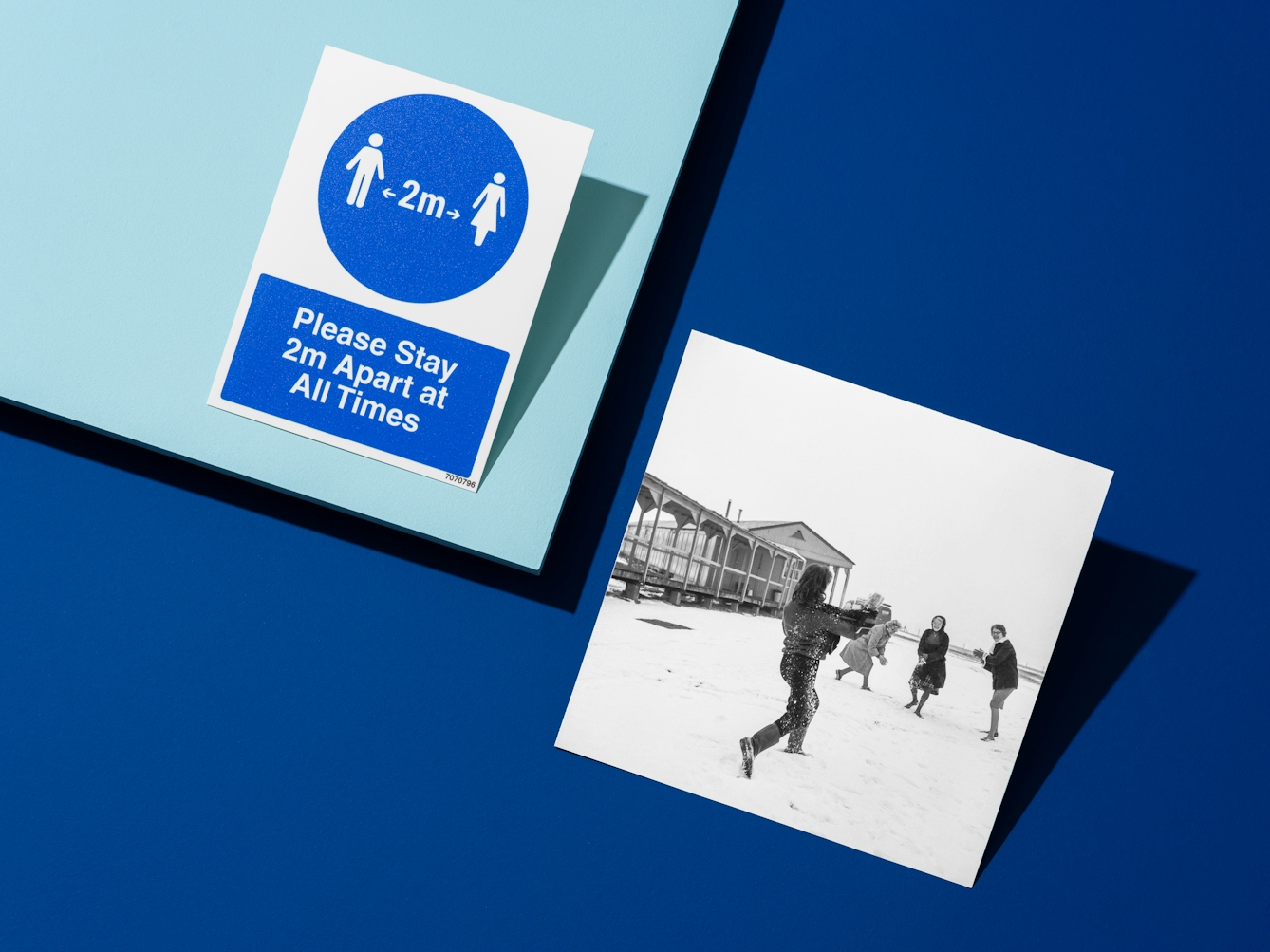Trying to get romantically close while staying physically distant is not a new challenge. Elena Carter explores how couples connected in creative ways during experiments that forced them to self-isolate in a pre-internet age.
Remote romance and the common cold
Words by Elena Carterphotography by Thomas S G Farnettiaverage reading time 6 minutes
- Article

Life under lockdown is presenting challenges for our sex and love lives. Aside from those who live with someone they also have sex with, we’re going through a period of forced abstinence. No casual hook-ups, no cosy Netflix and chill, no candlelit dinners for two.
Dating apps are responding creatively to the no-contact rules, encouraging people to chat online via video calls (Zoom sex, anyone?) or arrange virtual dates. The Terence Higgins Trust has also released guidance reminding us to find sexual pleasure in other ways – public health announcement: masturbation is a great way to relieve stress and pent-up sexual tension.
Although these times are unprecedented in some ways, trying to form romantic connections from a physical distance is nothing new. At the end of World War II, a novel clinical trial was set up to try and understand how the common cold was caused. The Common Cold Unit (CCU) was founded by the Medical Research Council and National Institute for Medical Research to reduce the economic burden of folks taking days off sick with sniffly noses.
This may seem frivolous to us today, but in the aftermath of the war, and following the 1918 flu pandemic, little was known about colds and how they were spread. The work of the unit led to the identification of the many different viruses that cause the common cold, including coronaviruses and rhinoviruses. As we know, COVID-19 is caused by a particular strain of coronavirus.
The ultimate in unhealthy holidays
These early experiments were instrumental in advancing scientific understanding of viral transmission, and they relied entirely on human volunteers to allow the virus to be observed in its natural host. The alternative would have been to use chimpanzees, but they were ruled out as being too expensive. Humans were cheaper and, it turned out, could be persuaded to participate through the offer of free accommodation and food over a ten-day countryside stay.

At the Esso Oil Refinery at Fawley, Hampshire, volunteer Gill Holloway receives the new “live virus” anti-flu vaccine, developed at the Common Cold Research Unit in Salisbury. It is being administered by virologist Dr Paul Beare. 1970.
The human guinea pigs who took part in ten-day residential trials were either administered with a cold virus or a placebo in a double-blind trial. Once the viruses had been administered, the fully gowned and masked staff waited from a distance in anticipation of the first sneezes erupting. Every day scientific staff studiously recorded the symptoms of the volunteers, even weighing and counting the number of snotty tissues they produced.
Over its four-decade history, the unit became a well-established hub of virology research, as well as, more bizarrely, a much-loved budget holiday destination. Based in the Salisbury countryside, with free food and lodgings, the trials were advertised as a holiday at government expense. It may seem strange to us now that people would choose to self-isolate AND get a cold – but during a time of post-war scarcity, the offer of a free ten-day break was not to be sniffed at.
The CCU promoted the centre as a cheap holiday resort for wedded couples, boasting that: “Young married couples, and older ones alike, enjoy the rest for ten days from housekeeping and cooking.” Other participants included students wanting quiet time to study, aspiring writers seeking inspiration, and those who simply wanted to benefit from the beautiful surrounding countryside. The popularity of the unit proved infectious.
Over its four-decade history, the unit became a well-established hub of virology research, as well as, more bizarrely, a much-loved budget holiday destination.
Finding creative ways to connect
For the experiment to work, it was essential that the volunteers were socially distanced. This was important so that the observing scientists could monitor how colds were spread. Volunteers who signed up to the scheme were housed either alone or in pairs or threes in repurposed wartime Nissen huts.

Student nurse Anne Wilkie sneezes for effect at the Harvard Hospital Common Cold Research Unit, Harvard Hospital, Salisbury, 1962.
Only married, heterosexual couples could share accommodation, and individuals were otherwise matched with others based on shared interests, or housed alone. To avoid cross-contamination, participants had to remain at least nine metres apart from those housed in other Nissen huts. Staff reminded volunteers that a “thoughtless breach of isolation can ruin the whole scientific trial, and create havoc, and waste all the expenditure of time and money and effort”.
With this stern warning in place, the volunteers were free to play games, read and explore the local countryside while they waited to see if they got a cold.
Much like today’s conditions of isolation and boredom, people found innovative ways to form romantic connections from a distance. In fact, the CCU almost seemed to encourage it – as one press release put it: “Isolation is not as bad as it seems. All the flats are connected by phone, so you can talk to that smashing blonde in the next flat.”
Flirting from afar
On arrival volunteers would be given a list of other participants’ names along with an information sheet, which included a hint on how to conduct flirtatious contact: “Chatting up other volunteers in a different flat can only be by telephone, or at a very long range outside.” One medical student recalled that he and his friend would use the participants’ list to identify single women to call and chat to.
Sometimes these calls would then lead to games played over the phone, including noughts and crosses, chess, and charades, plus socially distanced walks. On the receiving end of some of these phone calls, a female volunteer recalls long conversations with a few men who would give “histories of their lives which were, I think, largely fictional”.

Keeping her distance to avoid cross-infection, Mary Lambert (left) throws a snowball at fellow voluntary patients at the Common Cold Research Unit, Harvard Hospital, Salisbury, 1966.
In this strange environment many friendships and relationships blossomed using creative methods of communication, including semaphore, from one flat to another, and secret ‘lovey-dovey’ notes passed under the door. One volunteer even got his guitar out to play songs at a distance to a woman in a neighbouring flat, who would join in on her cello. This surely proves that long before the Oasis song ‘Wonderwall’ inspired myriads of dubious serenades, men have felt the need to get a guitar out at any unsolicited opportunity.
One unmarried couple housed in adjoining flats got permission to go for walk holding opposite ends of nine-metre string. Apparently, during “an early stage of the walk the string collided with the trunk of a tree and folded back on itself, still taut, bringing its ends – and the lovers – together”. While this story does feel a bit like a ‘Carry On’ film in its comedic value, it shows the lengths we will go to in finding connection with someone at a distance.
We are naturally sociable creatures who are used to being around each other, so lockdown is a real struggle for lots of people, who face social isolation, mental ill health and the adjustment to a strange way of life. But our archives show that it’s not the first time we’ve had to be creative in how we stay connected.
As the world’s leading scientists grapple to control and understand today’s global pandemic, we have been thrown unwittingly into the biggest social experiment of all time. But at least we’ve got the internet.
About the contributors
Elena Carter
Elena Carter focuses on developing the collections at Wellcome to challenge the way that we think and feel about health. Elena is particularly interested in radical and social histories and material that gives voice to marginalised groups. As Collections Development Archivist, she works directly with people to find the best home for their materials, with a focus on working collaboratively and ethically.
Thomas S G Farnetti
Thomas is a London-based photographer working for Wellcome. He thrives when collaborating on projects and visual stories. He hails from Italy via the North East of England.

